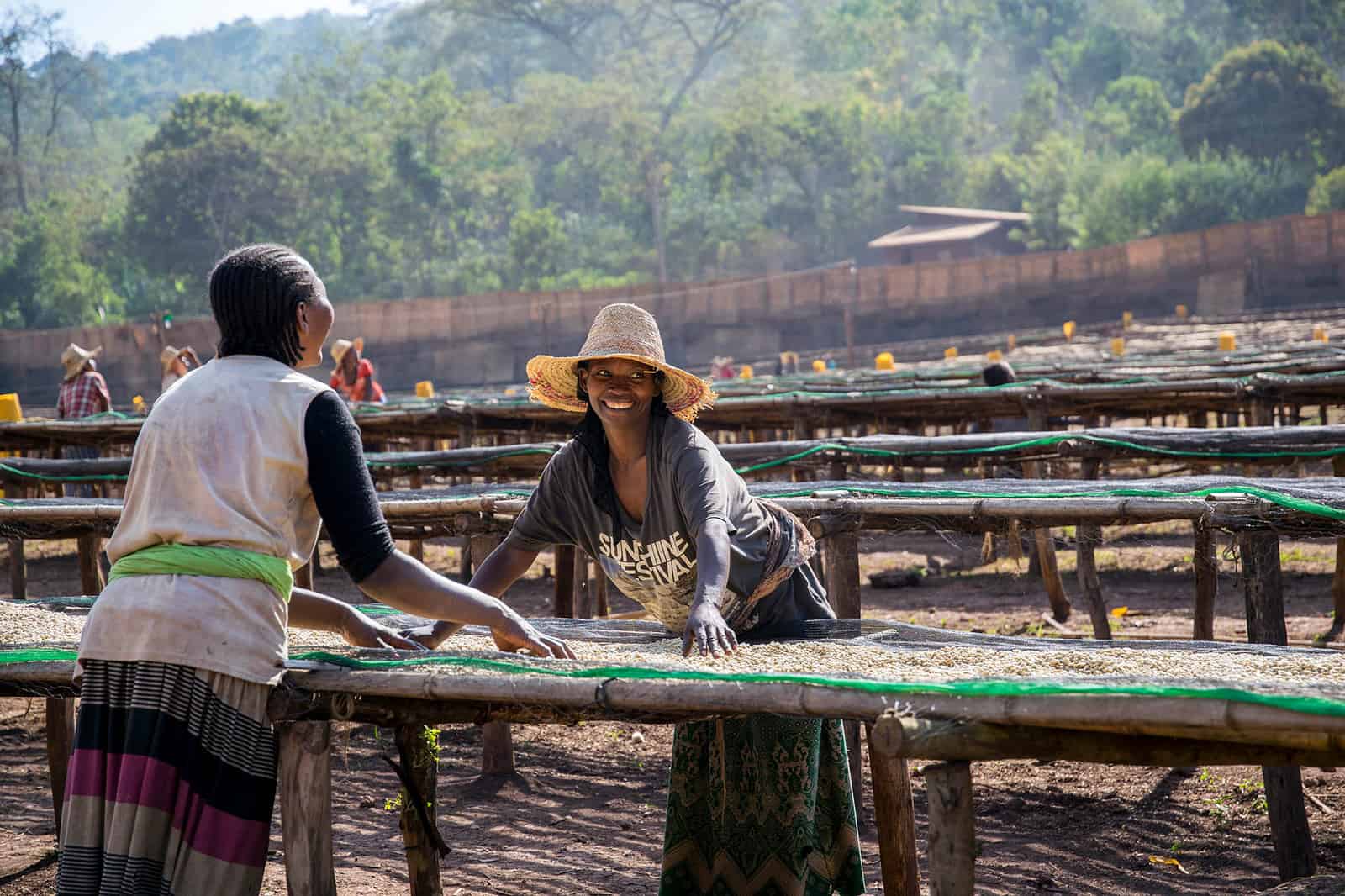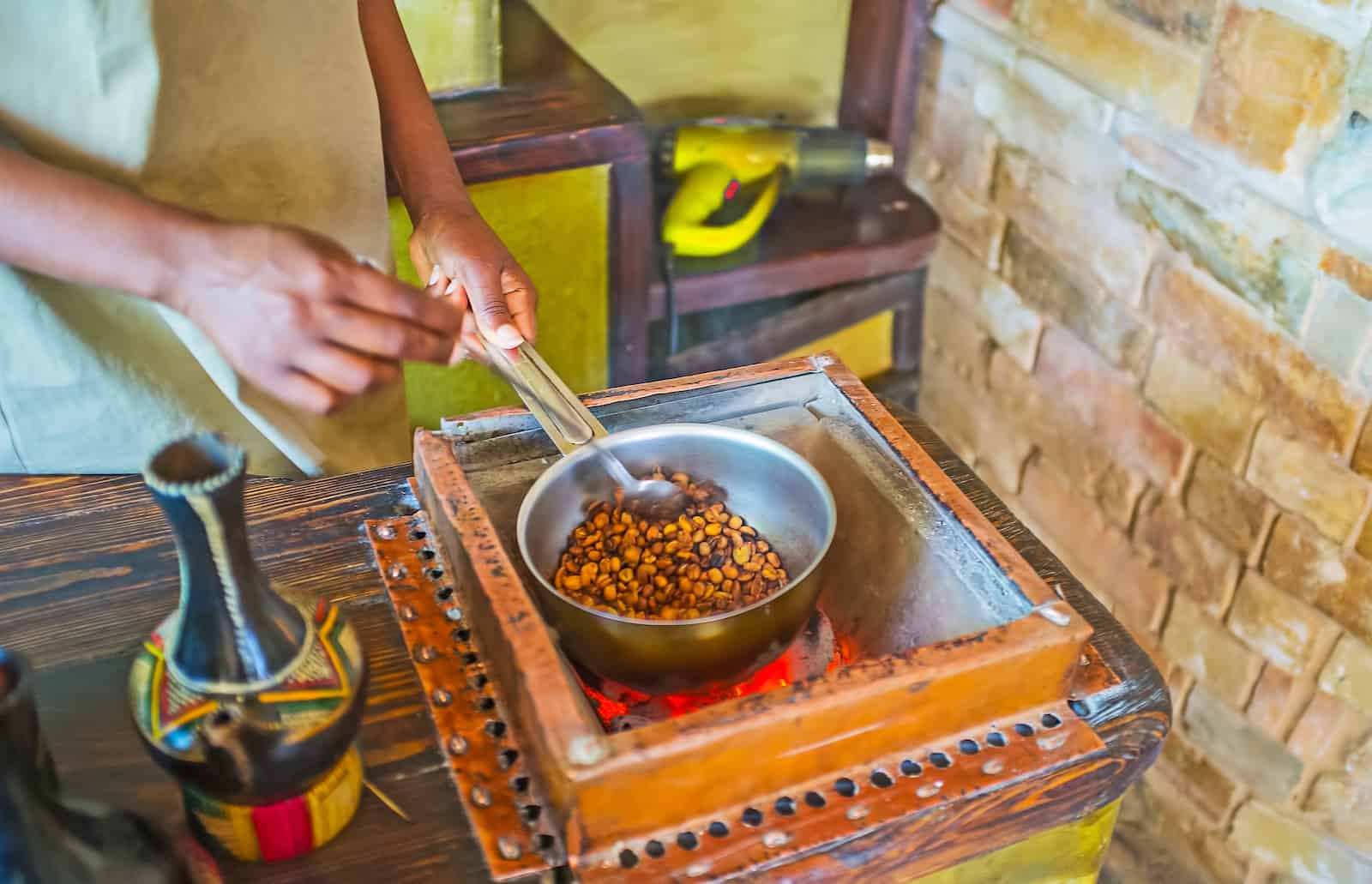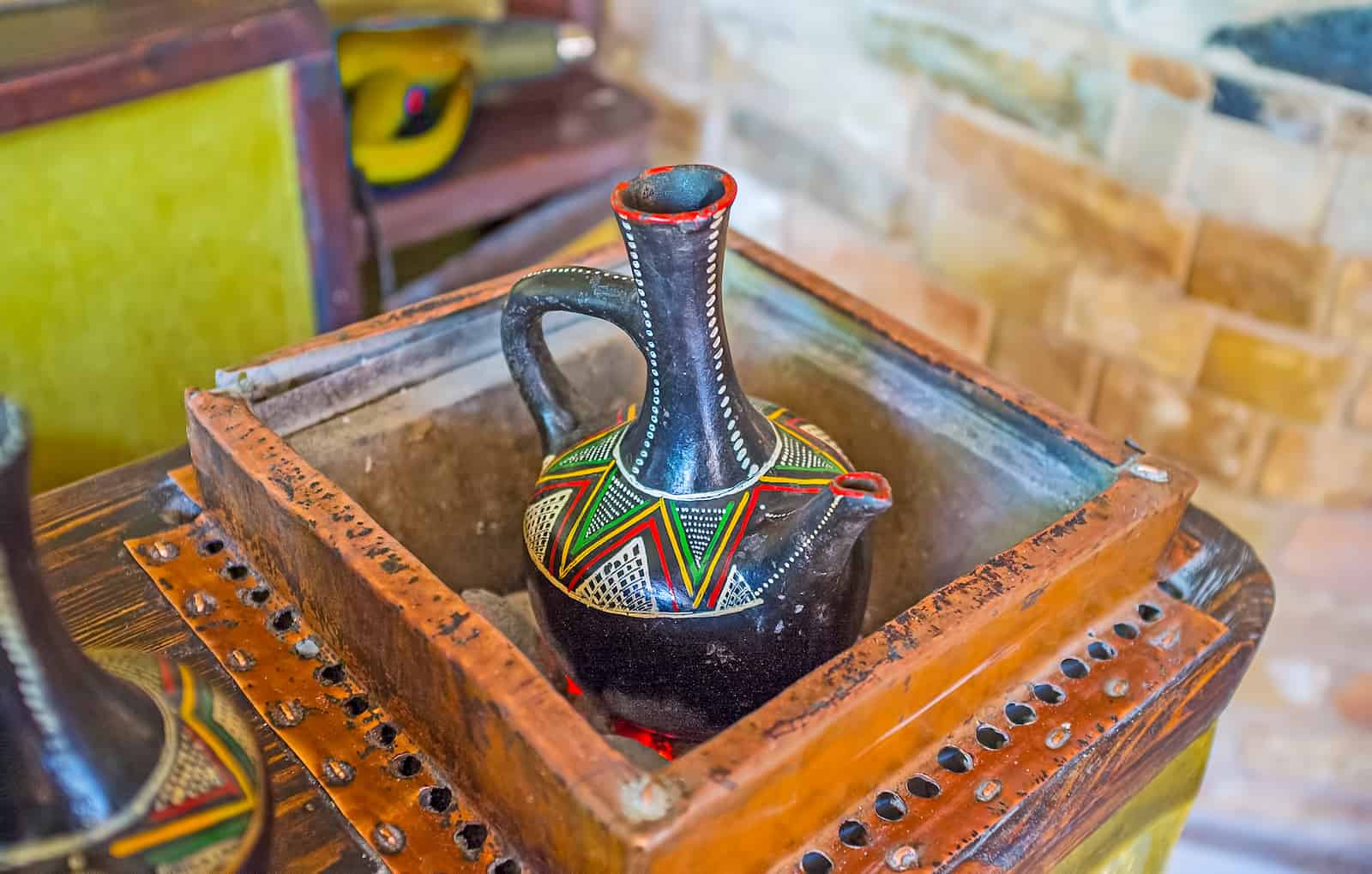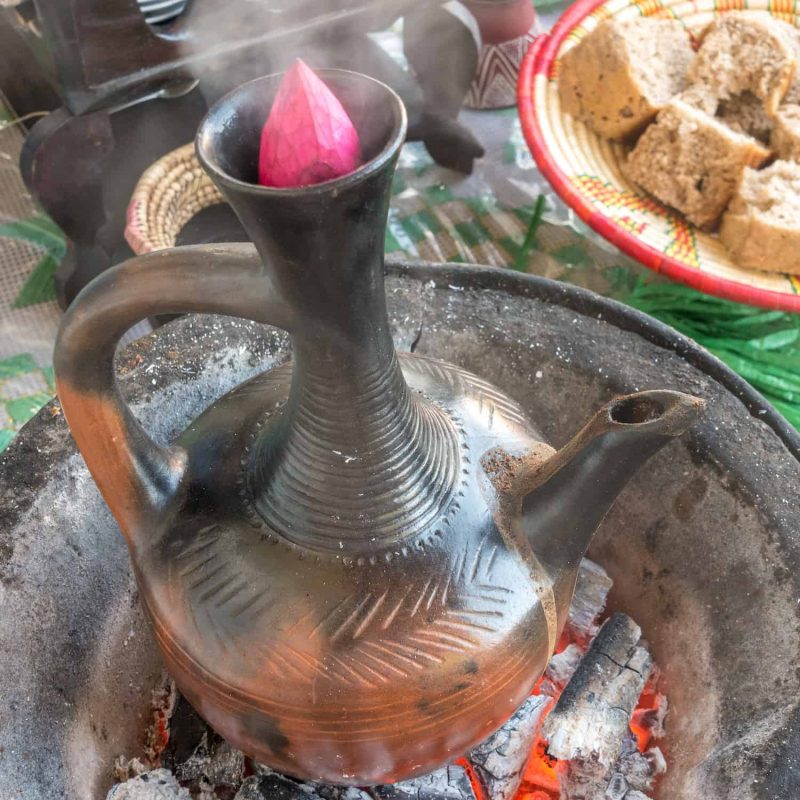Ethiopian Coffee Guide – The Birthplace of Coffee

Ethiopia has a significant role to play in the worldwide history of coffee, and some amazing stories of its own. Not only that, but some of the world’s best coffee originates from here. Even though Ethiopia only accounts for around 3% of the world-wide coffee market, coffee plays a significant role in their economy, where it accounts for around 60% of foreign income.
It is estimated that 15 million people from Ethiopia rely on coffee to earn a living, and it makes up a significant amount of their total exports.
To put it simply: Ethiopia has given a lot to the world when it comes to coffee, and coffee has given a lot to Ethiopia in return.
What Makes Ethiopian Coffee Special?
It’s been called The Birthplace of Coffee, and for good reason, as the first Arabica beans were discovered here. It hasn’t been smooth sailing, as is the case in many countries that produce coffee beans, but through hard work and resilience, passion, care, and determination, they’ve managed to build something very special that the rest of the world can share and enjoy.
Don’t worry, they enjoy plenty of their own supply in Ethiopia as well. Roughly half of the coffee produced in Ethiopia is for domestic use. Coffee, not surprisingly, plays a large role in their culture, and ceremonies for important events are often celebrated with long-lasting sessions of drinking and enjoying coffee.
Growing Conditions

Ethiopia has incredible conditions for growing amazing coffee beans. Coffee plants have been growing in the wild here for a very long time, and there are countless different varieties. Very little is needed, for example they don’t use any additional chemicals, and the vegetation offers ample shade, naturally.
Coffee grows wild here, and it’s not uncommon to find little makeshift productions while walking along, where someone has picked a few beans and left them out to dry, to grind up and drink later. It’s deeply, deeply ingrained in the culture.
The soil itself is deep and fertile, and all of this comes together to create something truly special. You have to taste it for yourself…
Flavor Notes
The various types of coffee from Ethiopia are often described as having a fruity or floral mix of flavors. The exact taste will vary by region and cultivar, but a higher-than-usual acidity with a light, sometimes medium body are traits that are common.
How It’s Processed
Coffee production here is a mixture between sun-dried and completely natural by-hand, and wet processing / washing. The way coffee is processed will have an impact on the flavor. Natural, or sun-dried beans will have a sweet berry flavor to them, almost wine-like. The fruits are dried in the sun before being removed.
Washed, on the other hand, where the beans and the fruit are separated shortly after being picked, will have more of a floral or citrus taste. They’ve been compared as being more like tea, whereas their sun-dried counterparts are more like wine.
Ethiopian Coffee Regions

Let’s explore the main three regions of coffee cultivation in Ethiopia, where a lot of the coffee plants grow wildly. There are thousands of different varieties of coffee grown here, and their tastes will also vary based on how they are processed.
Harar
The coffee from this Eastern region is dry-processed, and is one of the oldest varieties of coffee bean that is still produced to this day. Medium acidity, full body, and a noticeable touch of mocha on the palette. Most of the work here is done by hand, leading to a close connection between the farmers and their produce.
Ghimbi
Coffees from Ghimbi are wet-processed, which accounts for a growing quantity of the country’s production. The coffee from this western region is noted as being more of a balanced cup, on the heavier side.
Sidamo (Yirgacheffe)
The coffees from here are regarded as some of the very finest that the world has to offer. They have a very light, citrus-like flavor. They are grown in the Southern region, have an amazing aroma, and are an absolute must-try if you’re only going to try one type of Ethiopian coffee.
A Brief History of Coffee in Ethiopia
In the year 850…
The story goes that an Ethiopian herdsman named Kaldi noticed that his goats had a lot of energy and spunk when they were near a particular bush, and this lead him to the coffee cherries. He decided to give eating them a try, and enjoyed the results so much that he started sharing these beans with others.
17th Century
It is believed that exports could have begun around this time, perhaps earlier, but it wasn’t until the 19th century that they started to become more significant in mass.
1974
Ethiopia was ruled by a dictatorship during this time, who forced farmers to sell their coffee beans directly to the government. When a ruthless dictatorship forces you to sell your products to them, you can bet it will be at a very unfavorable price to you.
1991
The dictatorship falls, and farmers started to create co-ops in order to work together for better and more sustainable pricing. There are pros and cons to this new model, some in favor of it and some who are very opposed.
2008
The ECX is launched as a way to trade crops. Under this system, coffee is pooled together from various sources and re-packeded based on flavor profile. There are pros and cons to this system, too. On the plus side, it can help open up the markets to farmers and earn them better pricing. The downside is it makes the beans untraceable back to their origin, which is something that buyers care about.
Final Thoughts
Ethiopia has a lot to offer to a curious coffee-drinker, from unique flavors to an interesting history. It’s one of the premiere sourced for high-quality coffee, and the unique conditions lend themselves to a very bright, flavorful cup that can’t really be replicated anywhere else in the world.
If you haven’t tried coffee from Ethiopia before, you’ll be glad to know that it’s also very accessible, you should be able to find something at most grocery stores with a half-decent selection of coffee beans to choose from. If not, you’ll certainly find it at a specialty roaster.


